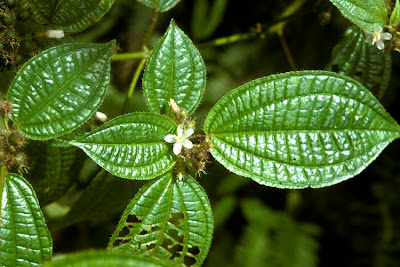Tuesday, January 1, 2008
Friday, December 28, 2007
uniquely bukit batok nature park
bukit batok nature park has become my base for my morning walks. the reasons for my choice: proximity, area large enough for an hour walk, free parking, presence of a body of water, toilet facilities, undulating landscape and funny characters.
another suitable candidate for my base is the bukit timah nature reserve. the only setback: it is very difficult to turn into hindhere road before 9.00 a.m. because of the morning peak hour traffic. sometimes, i am forced to encroach onto the bus-lane which is not worth the risk.
there are certain features at bukit batok which are not found in other nature parks. first, there is this disused granite quarry where granite slabs and earth are still slipping into the pond every time it rains. i have been wondering when some of the vegetation will come down with the earth holding it.
not far from this pond, there is this tree - i do not know if it is a banyan tree - that has wrapped most of its roots around a huge boulder.
free parking is available at lorong sesuai. this was also the site of a japanese shinto shrine and war memorial. the syonan chureito was built in 1942 to honour japanese soldiers who died in singapore during world war ii. according to records, there was also a wooden cross built in memory of allied troops who died during the same war. the cross was not far from the japanese memorial.
there is also a family of white breasted laughingthrushes that has made the bukit batok nature park their home. if you walk often enough in this park, you are bound to meet them. they have become so used to humans around them that they do not shy away when you approach them.
the characters who frequent this park also contribute to its uniqueness. there is this lady, in her 30s, who is rather uninhibited in her singing. she yodels or sings very loudly, sometimes in english and at most times, in mandarin.
there is another character who is always around the park with his partner, an indonesian maid. this man, in his late 60s, carries a support with him when he walks. in fact, he has two supports - the indonesian maid on one side and the four-prong support on the other hand. he is always chatting animatedly with his companion, but if you observe carefully, you will know that he does not need both supports - he can manage very well on his own.

koster's curse
i have this feeling that most people who walk or jog in the parks are quite oblivious to what is around them. they do not bother to find out more about the plants and trees that they come across during their jaunt in the park.
getting acquainted with the flora and fauna in the park makes the walk in the park more meaningful. being able to identify the more common plants and knowing something about them makes one feel connected with the surroundings.
one common shrub found in all parks in singapore is the koster's curse. the koster’s curse is a perennial shrub, about 50–200 cm in height. the hairy leaves are arranged in opposite pairs and have distinctive veins. the plant produces small, white flowers, followed by purple berries.
the koster’s curse is a highly invasive shrub native to tropical america. the species has been transported around the world as a garden plant and seed contaminant. koster’s curse has become a serious pest in at least 16 countries, including hawaii, fiji and indonesia.
in hawaii, more than 40 000 hectares are infested. once established, koster’s curse can form dense thickets that smother plantations, pastures and native vegetation, much like lantana.
if one is caught trying to sneak this plant into australia, one will face a penalty amounting to aus$60,000.
kite surfing at st kilda's beach
we were at st kilda when we saw about a dozen kitesurfers out in the sea having a whale of a time.
kite surfing is a seasonal activity in most parts of the world because this extreme sport is wind dependant. at st kilda's beach, the kite surfing season is between october and march.
kite surfing is a relatively new sport, with the first international competition held in 1998 on maui in hawaii.
Thursday, December 27, 2007

fireflies in singapore?
i do not think we will be able to see fireflies in their natural habitat in singapore ever again. it has been a long, long time since i last saw fireflies in singapore and these were seen within the vicinity of my house in the kampong. although, they were not in abundance, it was fascinating enough. i remember catching some and keeping them in a bottle. in the day, they appeared to be an ordinary insect.
the last time, i chased fireflies in the dark was more than thirty years ago at jason's bay in johor. we had ridden our motorbikes there and made camp on the beach. on that moonless light, we came across some of these bioluminscent bettles. we managed to catch some but released them soon after.
our malaysian friend who lives in kuala selangor had invited us in the past to visit her so that she could take us to kampong kuantan to watch the millions of fireflies by the riverbanks. found out during my last trip to desaru that you need not go all the way to kuala lumpur to catch this display of nature's wonder. you can also enjoy this experience along the banks of the johor river at kota tinggi.
fireflies are not flies; they are bettles. and not all species of firefly emit light or have a lantern at their ends. some species are able to synchronize their flashing so that they all flash in unison, on and off at the same time.
the flashing of fireflies is part of their courtship behaviour. generally male fireflies fly about and flash to locate females. each species of fireflies has its own flash pattern of male-female signal and response.
Tuesday, December 25, 2007
this tongkat ali is reborn
the last time i saw this tongkat ali (eurycoma longifolia jack) plant at bukit batok nature park, it was in a bad shape. i do not know whether its damage was the work of nature or the work of human. the slender trunk (or stem) had broken into two parts. subsequently, someone removed the top part where the leaves used to be.
i then thought that without leaves, the small tree would be dead. was i surprised today when i saw that new leaves had sprouted just below the break in the trunk.


